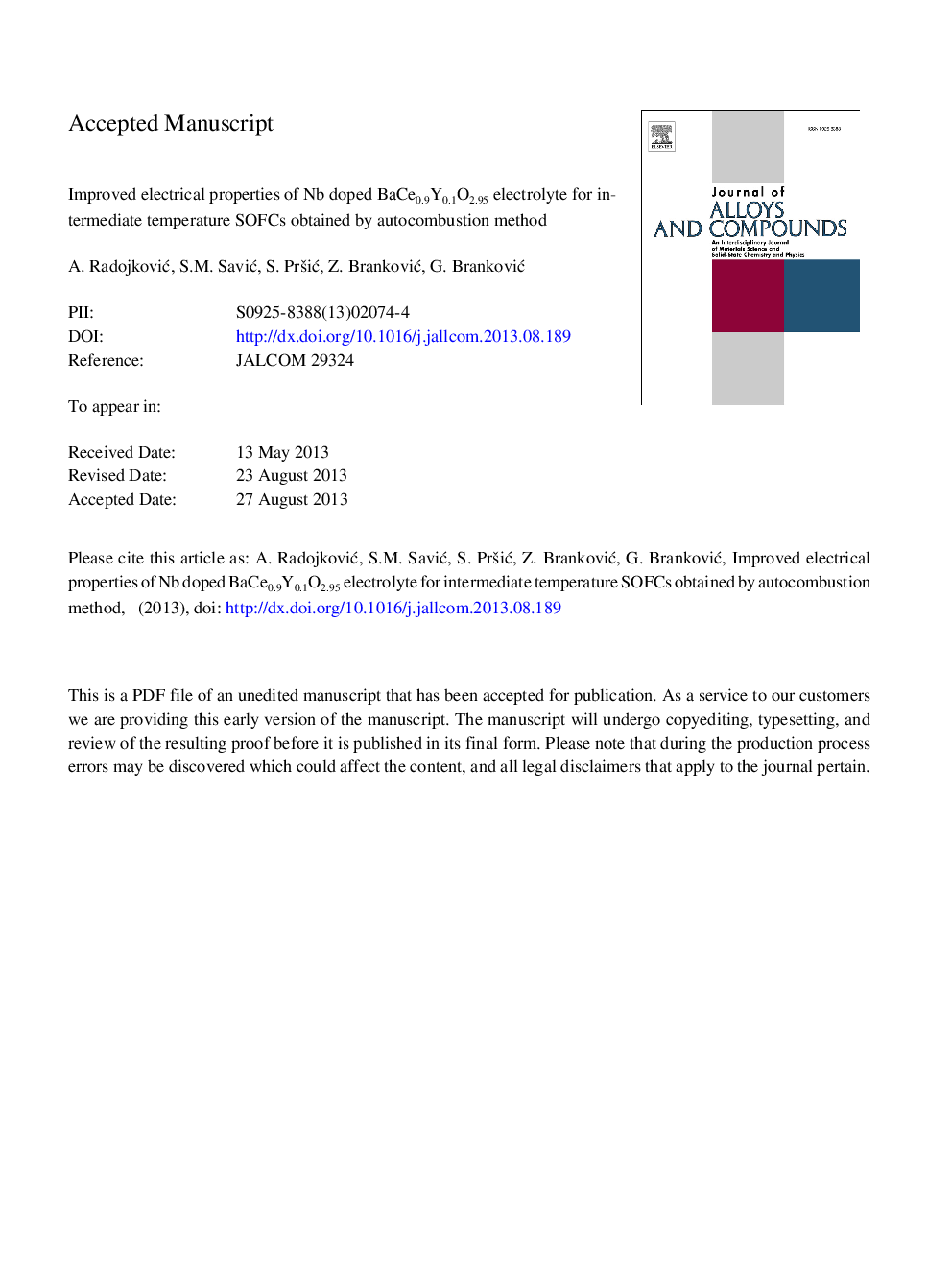| Article ID | Journal | Published Year | Pages | File Type |
|---|---|---|---|---|
| 1612762 | Journal of Alloys and Compounds | 2014 | 45 Pages |
Abstract
Nb doped BaCe0.9Y0.1O2.95 (BCY) powders were synthesized by both solid state reaction (SSR) and autocombustion reaction (ACR) method to investigate how different synthesis routes influence the properties of the powders and sintered samples. The powders were uniaxially pressed and sintered at 1550 °C to form dense electrolyte samples. Stability of BCY in CO2 can be increased by doping with Nb, but at the same time its electrical conductivities are reduced to a certain extent. It was shown that conductivities depended on both mechanism of defect formation, lattice parameters and microstructure of the electrolytes. Finer, less agglomerated powders were obtained by the method of autocombustion. SEM analysis revealed somewhat larger average grain size of the sintered samples synthesized by the ACR method. Total electrical conductivities were determined by electrochemical impedance spectroscopy (EIS) measurements in temperature range from 550 °C to 750 °C in a wet argon atmosphere. Again, higher conductivities were observed for the samples obtained by the ACR method and in some cases the relative difference in conductivity exceeds 20%. Thus, a certain improvement of electrolyte properties can be achieved by this method compared to the classical solid-state reaction route.
Related Topics
Physical Sciences and Engineering
Materials Science
Metals and Alloys
Authors
A. RadojkoviÄ, S.M. SaviÄ, S. PrÅ¡iÄ, Z. BrankoviÄ, G. BrankoviÄ,
